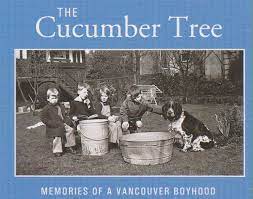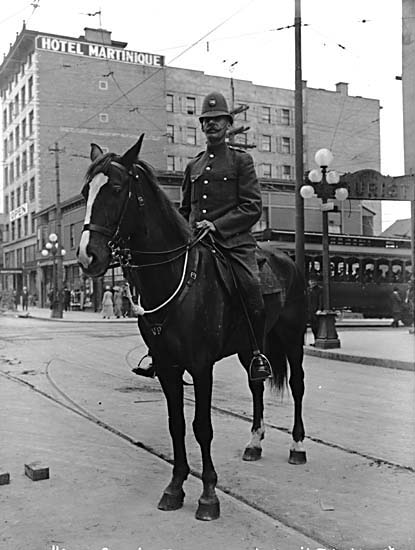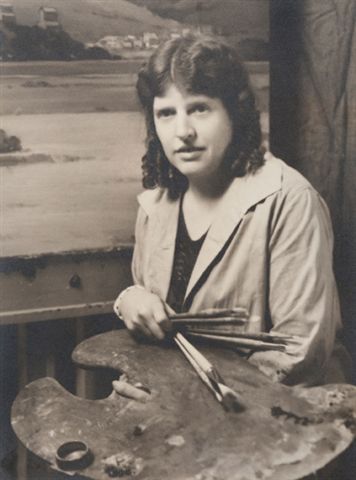Summaries of Talks and Field Trips - 2011
Glimpses of the Past through description, related books and internet connections
On Film: Vancouver at Work and at Play
Just how Vancouverites worked and played in the 1960s can be gleaned from select films chosen from amongst the 250,000 housed in the CBC film Archives. Even though the films are relatively recent in the city�s history, they reveal how considerably we have changed in outlook and behaviour since that time. One such short on a day in the life of a working bus driver reveals passengers exhibiting unsmiling demeanor as correct social public behaviour. Whereas the bus driver narrates his own daily work routines, in another film the voice of a waitress, who oversees a cafe selling mainly coffee and dessert – mainstays for the rather bleak cafes and restaurants of the time, is guided by a male voice-over. All pervasive smoking is obvious everywhere, particularly with the customers of the behind-the-counter waitress as well as in the environment of a musician who ekes out a living in nightclubs. Further, the films project the public face of Vancouver at the time as basically white, the main vehicle for proper social behaviour whereas a film on the interactions at the Hastings racetrack reveals a much more complex medley of peoples who were the true blood of Vancouver at the time.
Top 10 Endangered Sites in Vancouver
In 1991 the Heritage Committee of the Community Arts Council became an independent organization called the Heritage Vancouver Society. Initially in 2001, to celebrate its 10th anniversary and now an annual event, ten of the most threatened sites in Vancouver have been put on lists and advertised widely resulting in considerable success. A few of the sites which have benefited from this much needed attention are the Stanley Theatre, Victory Square neighbourhood and Lions Gate and Burrard Street bridges. This year, 2011, the 10 most threatened sites are 3 Schools: Carlton, Kitchener and Sexsmith; 2 Residences: Shannon Estate, Gordon T. Legg Residence; 2 Districts: Strathcona North of Hastings, and Lower Mount Pleasant; 1 Street: Granville Street; 1 Library: Collingwood and 1 Motel: 2400 Motel. (see http://www.heritagevancouver.org)
Vancouver Public Library - Special Collections Tour
The Vancouver Public Library Special Collections serves Vancouver City as a rich archival source. Its Northwest History Collection contains heritage material (books, fire insurance maps, directories, newspaper indexes, etc.) from early British Columbia and is particularly strong in the areas of Vancouver and the Lower Mainland. It similarly has materials in a variety of formats from books to DVDs, on early Yukon, Oregon, Washington and Alaska history. Ninety thousand of its 240,000 black and white photographs can now be accessed on-line. Care is taken to preserve the photos in a temperature controlled vault and must be handled with cotton gloves. As many of the directories have seriously deteriorated from constant use over the decades, its 1860-1915 Directories (they ceased publication in 1996) can be accessed online or, or all can be accessed at the library on microfilm. Other specialized collections include early children�s and young adult�s books, audition and production lists as well as an assortment of ephemera ranging from illuminated manuscripts to a page of the Gutenberg Bible. (see: Vancouver Public Library website)
The Natural Landscape of Vancouver
The area of Vancouver has gone through enormous changes from 15,000 years ago when the weight of glaciers had pushed the area well below sea level. As the climate warmed and land rose, various vegetations took hold with the First Nations people following the outward growth of the expanding delta. Animals such as beaver built dams creating water habitat for a panoply of wildlife. Bears harvesting migrating salmon inadvertently fertilized the forest floor with nitrogen-rich fish carcasses, thus facilitating the growth of giant trees. First Nations people managed the flora by creating meadowland through controlled burning, and maximized their take through selective harvesting, transplanting and pruning. The cedar tree was exploited for its endless uses. Fauna was similarly managed, for example, by creating sandy areas to facilitate clam harvest and fish weirs to capture migrating fish. The various streams in Vancouver could also be harvested for their trout and eels.
Arriving outsiders, particularly Europeans, saw their marriage to the landscape and sea a commercial one. Out went the old growth forests to be replaced with imported flora. Streams were filled in as were parts of the city. Industry and people moved in changing the landscape forever. The amazing original landscape of Vancouver is almost entirely gone today, but our city is so young we have an unusually good record of what has been lost. (see Bruce Macdonald�s Vancouver: A Visual History, Vancouver: Talonbooks, 1992; see also www.falsecreekwatershed.org)
Bard on the Beach
Bard on the Beach, Western Canada’s largest professional Shakespeare festival, is held every summer in open-ended tents in Vanier Park allowing spectators to absorb Vancouver�s spectacular scenery while taking in first-class theatre. Begun in 1990 as an equity co-op in a rented tent, a surprise summertime attendance of 6,000 prompted the small group to reorganize under the Bard on the Beach Society. By 2011, with four usually sold-out Shakespeare plays run each summer on the Main and Douglas Campbell Studio Stages, the annual attendance has grown to 100,000, still under the guidance of actor-director Christopher Gaze. The Society, which also provides lectures and workshops to students, teachers and lifelong learners, is currently overseeing an expansion of its seating capacity to accommodate its ever-growing audience. (see: http://en.wikipedia.org/wiki/Bard_on_the_Beach)
The Cucumber Tree - Boyhood memories of life in Vancouver in the 1940s and 1950s
Experiencing one’s formative years in the 1940s and 50s in Vancouver meant that the rules of behaviour, dress, loyalty and obligations were clear reflecting the more limited voice and cultural boundaries of the population of the time. To children in Kerrisdale it was an unfettered life: building forts, shooting slingshots, catching muskrats, making campfires in the local woods and hanging out on the branches of a local tree, which they dubbed the “Cucumber Tree”. It was a world in which children played outdoors from dawn ‘til dusk without supervision. As time progressed and for people like Bob Ross, traditional private school imbued a sense of grounding, loyalty and duty. The 1950s, however, brought the unsettling aspects of television, Rock and Roll and the dark shadow of the Cold War. The belief that the Russians would soon bomb Vancouver imbued such a fear that more than a few became very creative with their own survival plans. (see: The Cucumber Tree – Memories of a Vancouver Boyhood, Vancouver, BC, 2009).
Passing Time: Photographing Vancouver Over Four Decades
Black and white images from photographer Trevor Martin not only add a rich texture and dimension to the tonality of our city’s history, especially the last four decades, but also reveal a physical and attitude change. During this time, Granville Island has been transformed from a refuse-piled industrial area to a people place. Waterfront piers and waterfront that no longer exists have been transformed into Convention Centres; an open car park into the Erickson-designed courthouse. People-wise, the haze of smoke from Stanley Park “Be-Ins” has morphed over the decades into more directed protests to save land for parks, stop wars, etc. While PNE “girlie” shows have disappeared from our consciousness, embedded Asian traditions elsewhere remain steadfast whereas city fashions have evolved slowly. In the not too distant future, fleeting memories of the Olympics will be made vivid once again by the care and art crafted into these black and white photographs.
Great Fire Walk
On June 13, 1886 brush fires started in freshly cut forest debris generally west of the escarpment and fed by unanticipated high winds, built into a wall of flame which roared over and around the bluff and through the newly incorporated city of Vancouver consuming almost everything in its path in 30 minutes. Wooden buildings still fresh with pitch simply exploded in flame and people found they could not outrun the raging inferno. Those who fled into the ocean saved themselves but others who acted irrationally in the spur of the moment simply vaporized and were never seen again. The exact number of dead has never been determined. That day volunteers from New Westminster began sending in emergency supplies and the very next day, people began to rebuild from the ashes of the consumed city.
Labour History Walking Tour
The story of organizing Vancouver’s working class within the context of an ever-evolving socio-economic order has always been with the end-goal of a fair return for, and improvement in the lives of the working man. From 1893, organized labour advocated free trade, free libraries, public parks and abolition of both child labour and the scrimping or shanghai-ing of drunken workers. When Chinese labour was perceived as being used as pawns to drive down wages, organized labour briefly saw itself on the side of excluding the Chinese. Yet, the Japanese formed their own unions and the first union on the Burrard Drydocks comprised mainly aboriginal workers. In 1912, Wobblies and Socialist Party members got around free speech issues by integrating their message into Salvation Army style soap-boxing of the day. During the Great Depression there was considerable public support for the plight of the workers especially for the younger men whose relief had been cut off at the age of 16. Because of companies trying to understandably protect profits by imposing their own unions and using city police and the RCMP to restore order in their favour, organized labour has worked hard to keep excesses in check and bring about a fair shake for the working man. (see: http://www.vdlc.ca or google search Pacific Northwest Labour History Association)
Orpheum Theatre Tour
The Orpheum Theatre (now the Orpheum Concert Hall), opened in 1927 as a silent movie/vaudeville house with almost 3000 seats as part of the large American Orpheum Circuit chain of touring performers. With the introduction of talkies and the decline of vaudeville, it evolved into a Famous Players movie theatre. Locally made pre-cast plaster and concrete forms comprise its many often fantastic architectural styles. Numerous local careers were started from the stage of the Orpheum such as Mimi Hines and Phil Ford, Yvonne de Carlo [Peggy Middleton], Juliette, Mart Kenny and Dal Richards; as well, countless well known Hollywood and international stars performed there over the years. Under Ivan Ackery’s colourful management style (1935-1969) the theatre was almost always filled and hugely popular with Vancouverites. In decline the 1970s and threatened with a gutting to make way for a multiplex theatre, many rallied around for its preservation. Even Jack Benny, whose wife Mary Livingstone [Sadie Marks] who had been raised in Vancouver, flew in help save the icon. Consequently, the City of Vancouver purchased it in 1974. It closed in 1975 and reopened in 1977 as an acoustically sound permanent home for the Vancouver Symphony Orchestra. Today, in spite of some minor structural changes the theatre retains all the glitz, glamour and glory of its heydays and is considered a Vancouver architectural gem. (see:: Ivan Ackery, Fifty Years on Theatre Row, Vancouver: Hancock House: 1980; Doug McCallum, Alice Niwinski, John Carter, Vancouver’s Orpheum: the life of a theatre, Vancouver: Social Planning Department, 1984)
Canadians of Indian Heritage: Their History in Vancouver
The story of Indians/South Asians in Vancouver and British Columbia is much greater than that of the Komagata Maru incident of 1914. Their story starts in the 1780s and 1790s with their presence in the Pacific working on British maritime fur trading ships and then, coming from Punjab 100 years later to a less than friendly reception. In 1897 Sikh soldiers from Punjab returning to India from having taken part in Queen Victoria’s jubilee, passed through Vancouver. As British subjects within the British Empire, they liked what they saw and were determined to return as immigrants. Considered a threatening block of votes and as low-paying threats to European-held jobs, Indians faced active discrimination from the start. However their cohesiveness and resilience through the Gurdwara (place of worship and community centre) and their sense of hard work and enterprise saw them through the bad times.
Since enfranchisement in 1947 and a further relaxing of immigration rules, Indians have arrived from all over the South Asian continent, not just the Punjab, and are now a vital part of the country’s fabric being prominent in all walks of Canadian life. [see Sarjeet Singh Jagpal’s Becoming Canadians: pioneer Sikhs in their own words, Madeira Park, BC: Harbour Publishing, 1994]
From Gangs to Terrorism: Crime in Metro Vancouver
Vancouver has always been a safe city for its citizenry in spite of the fact that the Vancouver area has had a long history of crime. Early policing involved curbing alcohol, drug and brothel activities. In the 1940s, prudish laws encouraged bootleggers as did after hours gambling and private clubs. By 1950 heroin, mainly in the Downtown Eastside area, and in the 1960s biker driven marijuana trade became problematic. By the 1980s, the Asians and Russian gangs were added to the mixture resulting in an explosion of addictions. Over the years, various gangs battled it out for control of trade as well as prostitution, illegal immigration and extortion.
At least a dozen gangs are recognized now some being organized locally and some international. Terrorism is a recent phenomenon for the Vancouver area. The seeming immunity from political, religious events and eco-terrorism happening elsewhere, was shattered with the Air India bombing. No longer could we dismiss it as happening elsewhere be it Sons of Freedom, the FLQ kidnap or the assassination of embassy officials. It has come home to roost. [see Kim Bolan’s Loss of Faith: How the Air India Bombers got away with Murder, Toronto: McLelland & Stewart, 2002]
The Life and Art of Mildred Valley Thornton
Still not a household name in her chosen city of Vancouver, Ontario born Mildred Valley Thornton (Hon. CPA, FRSA) is an artist whose works have stood the test of time; those who own pieces from her widely scattered collection, prize them dearly. During her lifetime, 1890–1967, Thornton acquired a reputation nationally and internationally but in Vancouver she was sidelined by the modern and abstract art of the time. Accomplished with landscapes and portraits, watercolours and oils, all done in bold colours laid down with large brush strokes, the story of this distinctive artist is an important part of BC’s history.
Fiercely independent, adventurous and driven, Thornton was also a noted journalist, Vancouver Sun art critic (1944-1959), book reviewer, published poet, recipient of a Canadian Authors’ Association Award for her book, Indian Lives and Legends (1966), and an advocate for social justice. Her collection of approximately 300 portraits of First Nations peoples of Western Canada, scenes of aboriginal life, and her vibrant landscapes are a unique legacy. (see: Sheryl Salloum’s The Life and Art of Mildred Valley Thornton, Salt Spring Island: Mother Tongue Publishing, 2011)
City of Vancouver Archives tour
The City of Vancouver Archives, a Vancouver gem, now boasts an online version of Major Matthew “Early Vancouver”, a project which the Vancouver Historical Society helped fund. The vault and cold-storage areas house various historical treasures which are kept in good condition with modern preservation techniques. (see: City of Vancouver Archives website)















